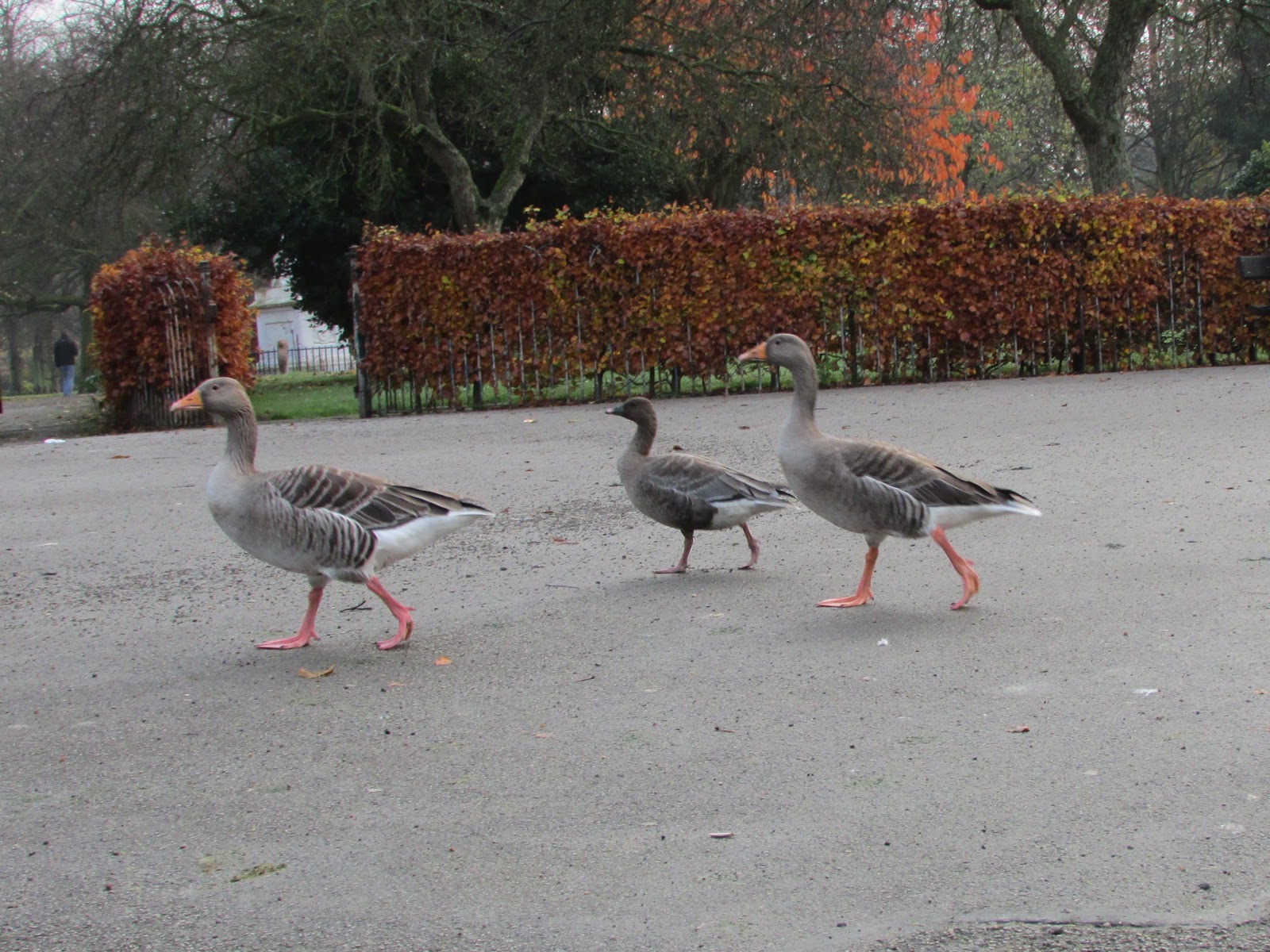
A couple of Goldfinches came to the nyger seed feeder. A Blackbird was sat on the rowan, which barely has any berries left, while a Dunnock and a Robin pecked at the bits of bread left by a Woodpigeon and a couple of Collared Doves visiting earlier. Yes, I do put food out for the birds. Bread crusts that the kids leave behind after breakfast, mixed seeds, peanuts. I stopped stocking the bird table with seeds though, as Woodpigeons and Collared doves wolf them down in a sitting.
But I do feel conflicted putting food out for birds. It is good for us or is it good for the birds? Yes, I do enjoy watching the birds coming to food I put out, but I much rather watch the birds that come to the garden for its intrinsic value: long-tailed tits hunting aphids in the bushes, blue tits looking for spiders on the wall, or blackbirds feeding on the rowan and cotoneaster berries or the fallen apples, or swifts and house martins flying overhead hunting insects. I also worry that I don't clean the feeders as often as I should.
A recent survey in New Zealand revealed that introduced species were more likely to benefit from supplementary feeding than native ones (House Sparrows and Blackbirds were the top species visiting gardens), questioning the conservation value of bird feeding. Here, we have proportionally fewer introduced species in gardens, but most of the birds which benefit from supplementary garden feeding have increasing of stable populations. Even if a few species in decline regularly come to gardens*, is this really the way we want to help them? providing a few scraps instead of good habitats?
We spend a lot of money on feeding birds. According to the
BBC, about £200 million is spent every year on bird food and bird feeding in Britain. About a third of us regularly top up our bird feeders. To give you an idea of how much money this is, compare to the 'meagre' about £25 million
annual income of the Wildlife Trusts. Imagine how much real conservation could be done with this money. Wouldn't it be better if we spent our collective money converting the same surfaces of land that we use to grow bird seed into new meadows, woodland and wetlands bursting with wildlife?
There are also costs to birds associated to giving the birds supplementary food, amongst them
disease. Dirty bird baths and feeders can transmit disease. Trichomonosis and
Salmonella outbreaks might have been responsible for the recent declines in Greenfinch, Chaffinch and House Sparrow populations.
Supplementary feeding has some interesting consequences. We are basically generating a new, often reliable food source, often during winter, when birds may find it difficult to find food. Birds are adaptable, and have started using this resource. The Goldfinch has spectacularly increased in numbers as a garden visitor. In the 90s it was present in less than 15% of gardens, while now is reported in about 50% of them. Much of this increase appears to stem from provision of Nyger seed, which is also encouraging Redpolls and Siskins into gardens. Once individuals find, and learn to use a resource, the habit is transmitted to the next generation. Another unforeseeable consequence of supplementary garden feeding is the recent change in migratory habits of the Blackcap. Blackcaps have become a common winter visitor in gardens. These birds are migrants from Germany, which move to the UK instead of the Mediterranean (I've covered this
before in The Ratting Crow). We are indeed changing birds in unexpected ways by feeding them.
The same New Zealand study I mentioned before examined the motivation behind bird feeding and found that people feed the birds because birds give them happiness (50% of respondents). As feeding birds brings us joy, it is unlikely to stop. I do look forward to the visiting Goldfinches. This summer, they brought a new generation of fledged young to the feeders, which will likely carry on visiting for years to come.
*Common declining garden species as found in the BTO
Garden Survey Results include House Sparrow, Starling, Greenfinch and Song Thrush.
More information
Galbraith, J., Beggs, J., Jones, D., McNaughton, E., Krull, C., & Stanley, M. (2014). Risks and drivers of wild bird feeding in urban areas of New Zealand
Biological Conservation, 180, 64-74 DOI:
10.1016/j.biocon.2014.09.038






















































